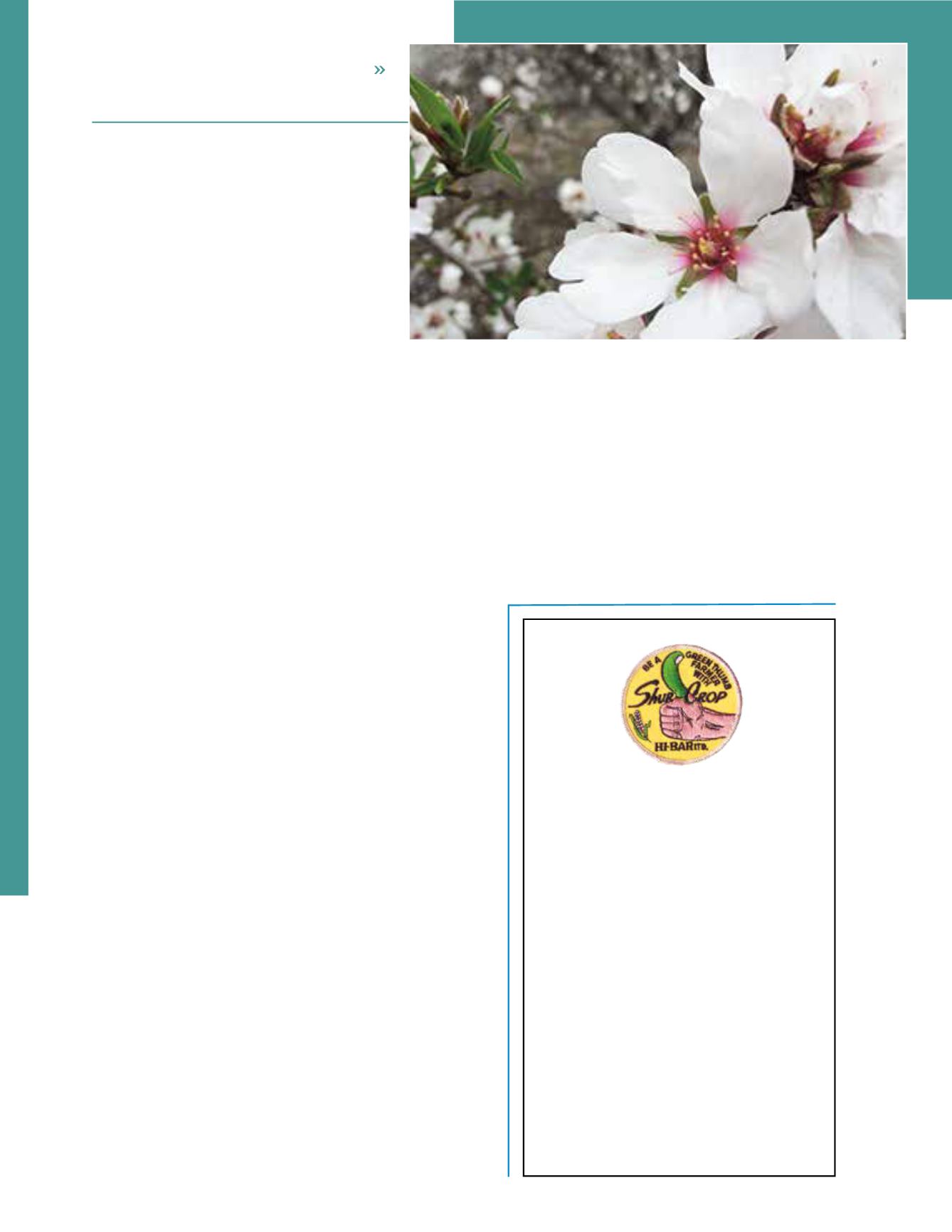
TIME TO CONSIDER
40
Almond Facts
JANUARY | FEBRUARY 2016
crown gall and tree loss. Holes should be
dug at the time of planting if possible, but
if not, as close to the timing of planting to
prevent “glazing” of the soil by the sun. If
the holes are dug with an auger or prior to
the planting day, slice the sides of the hole
with a shovel to break any crust that may
have formed. Plant the tree high enough
so that the nursery soil line is just above
the current soil line. Backfill the soil and compact
gently around the tree’s base to remove air pockets. Tank
the tree in with 4-5 gallons of water to help settle the
soil. Trees should be headed at 32”-36,” staked, and side
branches pruned. Fertilizers should not be applied until
there is 4-6 inches of new growth.
In preparation for a wet year, planting may be more
difficult. Due to field access issues, it may be necessary
to place the trees in cold storage. This decision should
be made before trees are delivered. Although it seems
counter-intuitive, tanking is still recommended due
to clods that form with wet soil. Furthermore, hand-
planting may be more feasible due to compaction caused
by machine planting equipment. Plan ahead!
Herbicides
This is a good time to apply any pre-emergent
herbicides. Orchard weeds need to be surveyed to
determine any specific challenges. The pre-emergent
product and burn-down partner selected should
provide control for the whole spectrum of weeds within
the orchard. Most pre-emergent products need to be
“watered -in” with either an irrigation or rainfall in
order to have efficacy. If applying a pre-emergent
product after the trees become active (~early February)
it may be beneficial to reduce the rate of pre-emergent
to the lower end of the label rate to reduce the risk
of crop injury. This is of more concern with low
cation exchange capacity soils. More information on
herbicide selection and orchard preparation can be
found at
/
dormant-weed-control-tree-nut-crops-2014/ and http://
thealmonddoctor.com/2013/12/14/pre-emergent-
herbicide-use-perennial-crop-orchards/.
The Final Thought
If the weather forecasts are correct, we could be in for a wet
winter and spring. Typically within California, February is
the wettest month, which, coincidentally, is when almonds
bloom and are the most sensitive to disease. Be aware that an
increased rate of blow-overs may occur due to the past four
mild winters and may slow spray applications. Plan ahead
and be prepared for activities that need to occur during these
periods that may be impacted by rain or wet fields.
Almond flowers are sensitive to a wide variety of
diseases. Fungicides should be considered when
inclement weather is in the forecast.
Impove organic matter
Increase water holding capacity
Increase healthy crop production
Shur-Crop's Certified Organic Icelandic Kelp
combines with metallic free radicals in the soil
to form beneficial polymers that tenaciously
increases the soils water holding capacity.
Icelandic cold water kelp stimulates healthy
deep root growth; retaining nutrients in a larger
root zone and helping to minimize the leaching
of nitrogen into ground water.
Shur-Crop resduce pest on Tanioka Farm
(209)769-5627. Field tested for 20 years.
By: Ron Barnes UC Davis, Master Degree
in Agronomy, CEO and 29 years owner of
Monarch Laboratory Inc., Chico California
Shur-Crop: manufactured in California since 1970
Ingredients: Organic Icelandic Kelp and Molasses
LEE KENDER INC.
P.O. BOX 472, OROVILLE, CA 95965
(808) 531-3141 office (808) 523-2473 fax
continued on page 40 >>


